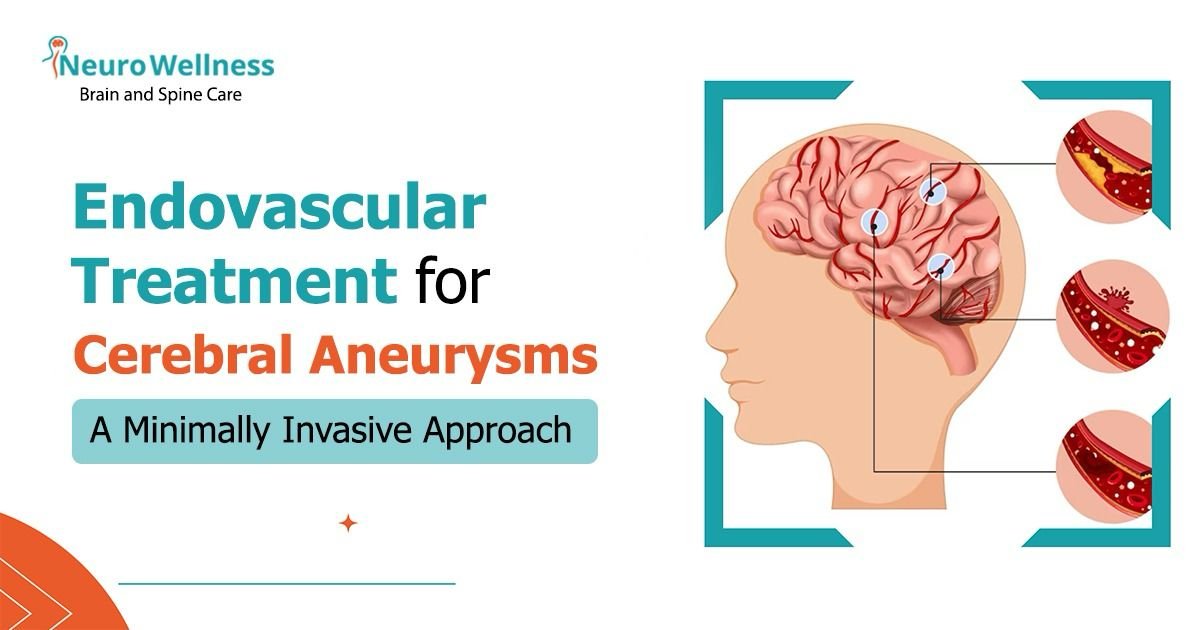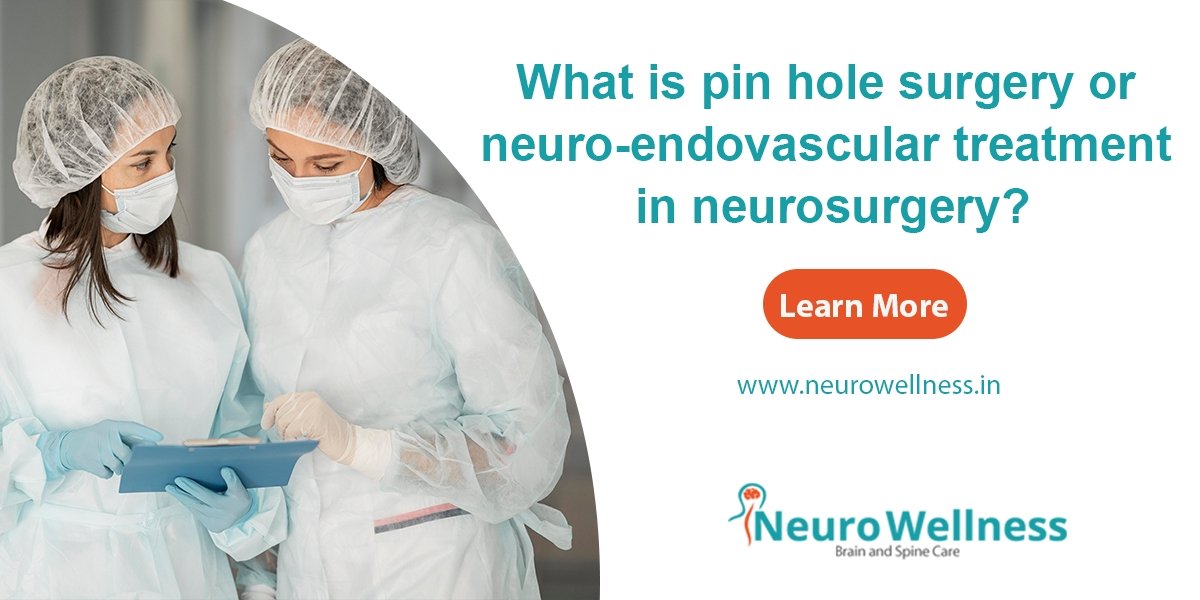Experiencing back pain? Understand your treatment options! This comprehensive guide explores various spinal surgeries and minimally invasive approaches.
Stenting For Major Brain Vessel Causing Cerebral Hypoperfusion Due To Stenosis
Preventing major stroke in high grade carotid artery stenosis: A case report
Dr. Ganesh Veerabhadraiah is a dedicated Neurosurgeon in Bangalore having 17 years of rich experience in the held of Brain, Spine and Neuroendovascular surgery. His passion is micro neurosurgery and cerebrovascular and endovascular. He is rigorously working round-the-clock with an intention to provide quality neuro care for all the needy through his excellence.
significant despite medical therapy. Early diagnosis plays a vital role in suffering from hypoperfusion.
Stenting plays an important role in re establishing the brain blood flow in case of high grade carotid stenosis refractory to medical treatment and preventing major stroke.
CASE REPORT
Introduction:
Celebral Hypoperfusion is a condition happens due to insufficient supply of blood and oxygen to the brain. Intracranial Atherosclerosis (ICAD) is a pathological condition where there is a narrowing of arteries due to accumulation of cholesterol plaque arterial wall. It causes reduced blood supply to brain which leads to cerebral hypoperfusion and stroke.
Case details:
A 65 year old man was brought to with chief complaints of weakness in the right side of the body along with frequent fainting attacks and he had a past history of diabetes and hypertension. He was diagnosed to have reduced blood supply to the left side of the brain. It was the result of the narrowing of the channels (arteries) that connect the heart to the brain.
MRI scan of the brain with perfusion scan showed that the patient had an inadequate flow of blood in the brain and narrowing of carotid artery at two places due to which he was at a high risk of getting major stroke and which should have caused even death. Owing to the severity of the condition, neurosurgeon recommended the patient to undergo intracranial stenting. The stenting helped in managing and normalising the blood flow to the brain. We did pinhole surgery / endovascular surgery to approach the brain vessels. through small puncture of femoral artery in the thigh. As he had narrow blood vessels in the neck and brain. Both these problems were addressed at the same time through stenting. The patient was suffering from cerebral hypoperfusion syndrome due to intracranial severe atherosclerosis.
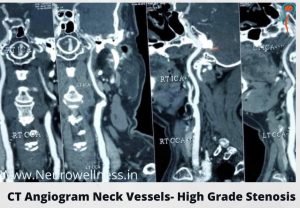
The team of neurosurgeon, neurologist, endovascular surgeon successfully treated by intracranial stenting at two places of brain vessels at the same time on the patient to reduce the risk of major stroke. Fortunately, the patient. withstood the entire procedure and there were no complications post. procedure. The patient is doing well now.
Discussion:
Stroke is a leading cause of adult disability, Intracranial stenosis is the narrowing of
major Intracranial arteries due to the build-up of atherosclerotic plaque. The standard medical therapy for patients with intracranial stenosis includes the use of
antithrombotics, statins, antihypertensives and risk factor control .The risk of recurrent stroke in patients with high-grade intracranial stenosis.
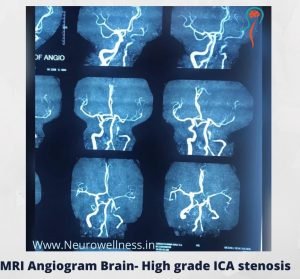
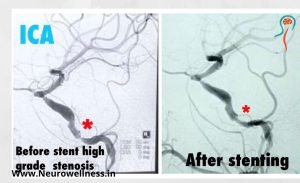
Reference:
The American Journal of Medicine: https://www.amjmed.com/article/S0002-9343 (06)00186-0/abstract
NCBI- https://www.ncbi.nlm.nih.gov/pmc/articles/PMC4640326/
AHA journal: https://www.ahajournals.org/doi/pdf/10.1161/01.STR.24.11.1691
Contact –
ಡಾ ಗಣೇಶ್ ವೀರಭದ್ರಯ್ಯ ಎಂಬಿಬಿಎಸ್, ಡಿಎನ್ಬಿ (ನರಶಸ್ತ್ರಚಿಕಿತ್ಸೆ), ಎಫ್.ಐ.ಎನ್ಆರ್ .(ಫೆಲೋಶಿಪ್ ಇನ್ ಇಂಟರ್ವೆನ್ಷನಲ್ ನ್ಯೂರೋ ರೇಡಿಯಾಲಜಿ /ಎಂಡೋ ವಾಸ್ಕ್ಯುಲರ್ -ಸ್ವಿಟ್ಜರ್ಲೆಂಡ್), ಸಲಹೆಗಾರರು – ನರಶಸ್ತ್ರಚಿಕಿತ್ಸಕರು – ಮಿದುಳು ಮತ್ತು ಬೆನ್ನು ಹುರಿ
ಡಾ ಗಣೇಶ್ ವೀರಭದ್ರಯ್ಯ
ಎಂಬಿಬಿಎಸ್, ಡಿಎನ್ಬಿ (ನರಶಸ್ತ್ರಚಿಕಿತ್ಸೆ), ಎಫ್.ಐ.ಎನ್ಆರ್ .(ಫೆಲೋಶಿಪ್ ಇನ್ ಇಂಟರ್ವೆನ್ಷನಲ್ ನ್ಯೂರೋ ರೇಡಿಯಾಲಜಿ /ಎಂಡೋ ವಾಸ್ಕ್ಯುಲರ್ –ಸ್ವಿಟ್ಜರ್ಲೆಂಡ್),
ಸಲಹೆಗಾರರು – ನರಶಸ್ತ್ರಚಿಕಿತ್ಸಕರು – ಮಿದುಳು ಮತ್ತು ಬೆನ್ನು ಹುರಿ
ಡಾ.ಗಣೇಶ್ ವೀರಭದ್ರಯ್ಯ ಪ್ರಸಿದ್ಧ ನರಶಸ್ತ್ರಚಿಕಿತ್ಸಕ – ಮಿದುಳು ಮತ್ತು ಬೆನ್ನು ಹುರಿ ಮತ್ತು ಇಂಟರ್ವೆನ್ಷನಲ್ ನ್ಯೂರೋರಾಡಿಯಾಲಜಿ / ನ್ಯೂರೋಎಂಡೋವಾಸ್ಕುಲರ್ ತಜ್ಞ,
ಪ್ರಸ್ತುತ ಫೋರ್ಟಿಸ್ ಆಸ್ಪತ್ರೆ, ಕನ್ನಿಂಗ್ಹ್ಯಾಮ್ ರಸ್ತೆ, ಬೆಂಗಳೂರು.
ಅವರ ಚಿಕಿತ್ಸಾಲಯದಲ್ಲಿ – ಜಯನಗರ 9 ನೇ ಬ್ಲಾಕ್ , ಬೆಂಗಳೂರು -ನ್ಯೂರೋವೆಲ್ನೆಸ್ ಮೆದುಳು ಮತ್ತು ಬೆನ್ನುಮೂಳೆಯ ಚಿಕಿತ್ಸಾಲಯದಲ್ಲಿ ಸಲಹೆಗೆ ಸಿಗುತ್ತಾರೆ .
ಎಂಬಿಬಿಎಸ್ ಮುಗಿಸಿದ ನಂತರ, ಡಾ.ಗಣೇಶ್ ಅವರು ಬೆಂಗಳೂರಿನ ಓಲ್ಡ್ ಏರ್ಪೋರ್ಟ್ ರಸ್ತೆಯಲ್ಲಿರುವ ಪ್ರತಿಷ್ಠಿತ ಮಣಿಪಾಲ್ ಆಸ್ಪತ್ರೆಯಲ್ಲಿ ಸೂಪರ್ ಸ್ಪೆಷಾಲಿಟಿ ಸ್ನಾತಕೋತ್ತರ ಪದವಿ ನರಶಸ್ತ್ರಚಿಕಿತ್ಸೆಯಲ್ಲಿ ಡಿಎನ್ಬಿಯೊಂದಿಗೆ ಮುಂದುವರೆದರು. ಸಂಕೀರ್ಣವಾದ ಬೆನ್ನು ಮತ್ತು ಮಿದುಳಿನ ಶಸ್ತ್ರಚಿಕಿತ್ಸೆಗಳು, ಸಾಮಾನ್ಯ ಸೂಕ್ಷ್ಮ ಶಸ್ತ್ರಚಿಕಿತ್ಸೆಗಳಲ್ಲಿ ವ್ಯಾಪಕವಾಗಿ ತರಬೇತಿ ಪಡೆದ ಅವರು, ಸ್ವಿಟ್ಜರ್ಲ್ಯಾಂಡ್ನ ಜುರಿಚ್ ವಿಶ್ವವಿದ್ಯಾಲಯದ ಆಸ್ಪತ್ರೆಯಿಂದ ಇಂಟರ್ವೆನ್ಷನಲ್ ನ್ಯೂರೋರಾಡಿಯಾಲಜಿಯಲ್ಲಿ ಫೆಲೋಶಿಪ್ ಪಡೆಯುವ ಮೂಲಕ ಹೆಚ್ಚಿನ ಪರಿಣತಿಯನ್ನು ಬೆಳೆಸಿದರು. ಜುರಿಚ್ ವಿಶ್ವವಿದ್ಯಾಲಯವು ಅತ್ಯುತ್ತಮ ವಿಶ್ವವಿದ್ಯಾಲಯ ಪ್ರಪಂಚಗಳಲ್ಲಿ ಒಂದಾಗಿದೆ.
ಎಂಡೋವಾಸ್ಕುಲರ್ ಕಾರ್ಯವಿಧಾನಗಳಲ್ಲಿ ತರಬೇತಿ ಪಡೆದಿದ್ದಾರೆ – ಮೆದುಳಿನಲ್ಲಿ ರಕ್ತನಾಳಗಳ ಸುರುಳಿ, ಎವಿಎಂ(AVM ಎಂಬೋಲೈಸೇಶನ್ ಅಪಧಮನಿಯ ವಿರೂಪತೆ, ಗೆಡ್ಡೆಯ ಎಂಬೋಲೈಸೇಶನ್, ತೀವ್ರವಾದ ಪಾರ್ಶ್ವವಾಯುವಿಗೆ ಯಾಂತ್ರಿಕ ಥ್ರಂಬೆಕ್ಟೊಮಿಯಂತಹ ಸುಧಾರಿತ ಸ್ಟ್ರೋಕ್ ಆರೈಕೆ. , ಜಪಾನ್ ನಲ್ಲಿ ಸೆರೆಬ್ರೊ ನಾಳೀಯ ನರಶಸ್ತ್ರಚಿಕಿತ್ಸೆ ಮತ್ತು ಮೆದುಳಿನ ಬೈಪಾಸ್ ಕಾರ್ಯವಿಧಾನದ ಕ್ಲಿಪಿಂಗ್, ಸಂಕೀರ್ಣ ಅನ್ಯೂರಿಮ್ಸ್ ಮತ್ತು ಅಪಧಮನಿಯ ವಿರೂಪ ಮತ್ತು ಶೀರ್ಷಧಮನಿ ಎಂಡಾರ್ಟೆಕ್ಟೊಮಿ ಚಿಕಿತ್ಸೆ.
ನ್ಯೂರಾಲಜಿಕಲ್ ಕಂಡಿಶನ್ಸ್ ಸಲಹೆ ಮತ್ತು ಚಿಕೆತ್ಸೆ-
ನರಶಸ್ತ್ರಚಿಕಿತ್ಸೆ – ಮಿದುಳು ಮತ್ತು ಬೆನ್ನು ಹುರಿ
೧ ಸಾಮಾನ್ಯ ನರಶಸ್ತ್ರಚಿಕಿತ್ಸೆ – ಮಿದುಳು ಮತ್ತು ಬೆನ್ನು
೨ ಗರ್ಭಕಂಠ ಮತ್ತು ಸೊಂಟದ ಡಿಸ್ಕ್ ಪ್ರೋಲ್ಯಾಪ್ಸ್ ಶಸ್ತ್ರಚಿಕಿತ್ಸೆ
೩ ಸೊಂಟದ – ಸ್ಲಿಪ್ ಬೆನ್ನು ಮೂಳೆ ಶಸ್ತ್ರ ಚಿಕೆತ್ಸೆ (TLIF, PLIF)
೪ ಮಿದುಳಿನ ಗೆಡ್ಡೆ ಶಸ್ತ್ರಚಿಕಿತ್ಸೆಗಳು
೫ ಅನ್ಯೂರಿಸಮ್ ಶಸ್ತ್ರಚಿಕಿತ್ಸೆಗಳು-ಕ್ಲಿಪಿಂಗ್
೬ ಕಪಾಲದ ಮತ್ತು ಬೆನ್ನುಮೂಳೆಯ ಆಘಾತ
೭ ಮೆದುಳಿನ ಬೈಪಾಸ್ ಶಸ್ತ್ರಚಿಕಿತ್ಸೆ
೮ ಅಪಸ್ಮಾರ ಶಸ್ತ್ರಚಿಕಿತ್ಸೆ
೯ ಸಂಕೀರ್ಣ ತಲೆಬುರುಡೆ ಮೂಲ ಶಸ್ತ್ರಚಿಕಿತ್ಸೆಗಳು
೧೦ ಮೈಕ್ರೊವಾಸ್ಕುಲರ್ ಡಿಕಂಪ್ರೆಷನ್.
೧೧ ಬೆನ್ನುಮೂಳೆಯ ಗೆಡ್ಡೆ ಹೊರಹಾಕುವಿಕೆ
೧೨ ಬೆನ್ನುಮೂಳೆಯ ಸೋಂಕು
೧೩ ಕೃತಕ ಡಿಸ್ಕ್ ಬದಲಿ
೧೪ ಸಿ.ವಿ ಜಂಕ್ಷನ್ ಅನಾಮೊಲಿಸ್ ಶಸ್ತ್ರ ಚಿಕಿತ್ಸೆ
ನ್ಯೂರೋ ವೆಲ್ನೆಸ್ – ಮಿದುಳು ಮತ್ತು ಬೆನ್ನುಮೂಳೆಯ ಆರೈಕೆ (ಜಯನಗರ 9 ನೇ ಬ್ಲಾಕ್)
1224, ಜಿ-ಮಹಡಿ, 26 ನೇ ಮುಖ್ಯ,
9 ನೇ ಬ್ಲಾಕ್, ಜಯನಗರ,
ರಾಗಿಗುಡ್ಡದ ಅಂಜನೇಯಸ್ವಾಮಿ ದೇವಾಲಯದ ಕಮಾನು ಎದುರು,
ಬೆಂಗಳೂರು, ಕರ್ನಾಟಕ 560069
ದೂರವಾಣಿ: 7259669911, 7349017701
4.30PM-6PM
ಫೋರ್ಟಿಸ್ ಆಸ್ಪತ್ರೆ, ಕನ್ನಿಂಗ್ಹ್ಯಾಮ್ ರಸ್ತೆ
14, ಕನ್ನಿಂಗ್ಹ್ಯಾಮ್ ಆರ್ಡಿ,
ಸಿಗ್ಮಾ ಸೆಂಟ್ರಲ್ ಮಾಲ್ ಹತ್ತಿರ,
ವಸಂತ್ ನಗರ,
ಬೆಂಗಳೂರು, ಕರ್ನಾಟಕ – 560052
ದೂರವಾಣಿ: 7349017701
ಸಮಯ: ಸೋಮದಿಂದ ಶನಿ – ಬೆಳಿಗ್ಗೆ 10 – ಸಂಜೆ 4
Website– www.neurowellness.in
E mail – neurowellnessinfo@gmail.com
Ph no 7259669911, 7349017701
You tube – Neurowellness India
Neuroendovascular Surgery
Endovascular Treatment Available – Mechanical Thrombectomy for Acute Stroke, Carotid Stenting, AVM Embolisation, DAVF Embolisation
Stroke – Risk factor, warning signs and latest treatments
Stroke happens when a clot or rupture of blood vessel interrupts blood flow to the brain., thereby reducing the oxygen supply and as a result the brain tissue dies.

